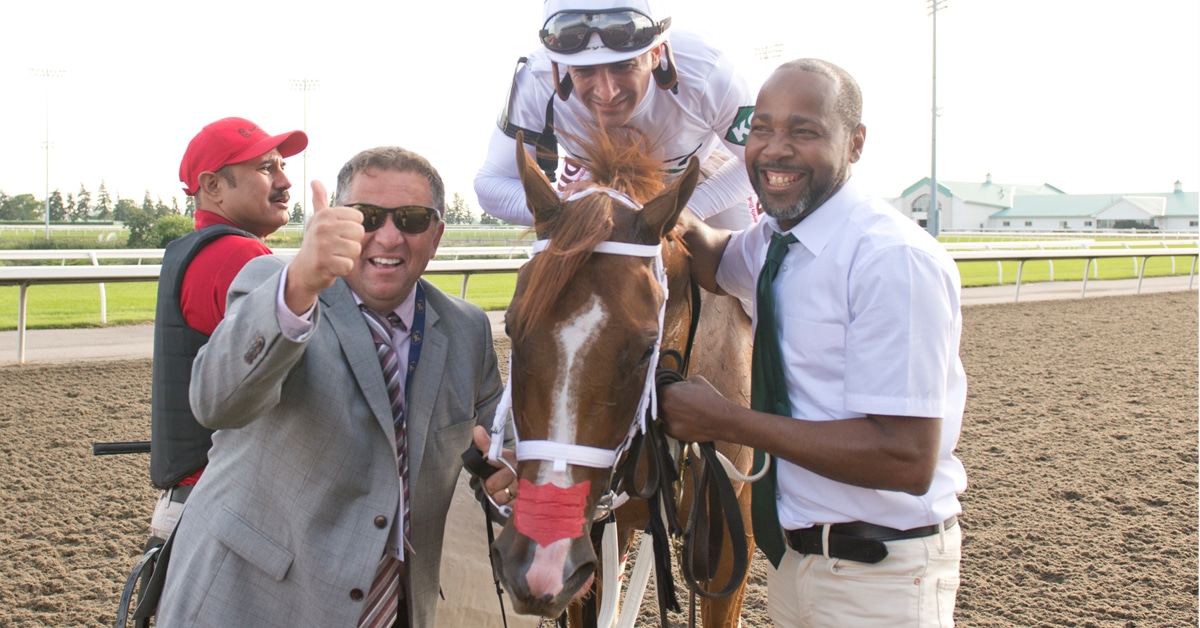Canadian Thoroughbred racing experienced a year of mixed fortunes in 2024, according to The Jockey Club’s 2025 Fact Book, which provides a comprehensive statistical overview of North American breeding, racing, and sales. While on-track wagering remained stable, off-track betting declined by just over 8%, highlighting the shifting dynamics of the industry.
The online Fact Book, which is updated quarterly and will begin offering weekly updates later this year, details figures through April 1, 2025. Among its key findings: total pari-mutuel wagering in Canada dropped to $705 million from $770 million in 2023. Despite the decline, this figure still ranks as the highest since 1995 ($795 million), a testament to the strength of Canada’s expansive simulcast network.

The country had seen a surge in wagering post-COVID in 2022, but competition from online sports betting and casinos has begun to erode those gains. The trend mirrors a broader industry downturn, with U.S. wagering also falling to $11.265 billion, marking the third consecutive year of decline.
Race Days Down, On-Track Handle Stable
While the overall number of races in Canada declined for the third year in a row—primarily due to tracks trimming a day or two from their schedules—many compensated by adding more races to remaining cards. Still, the on-track handle held steady at $26 million, nearly identical to 2023 levels. Purses also saw a decline, falling to $84.2 million from $88.3 million the previous year. However, regional trends varied significantly.
Wagering at Woodbine, the country’s premier track, declined sharply—down nearly 10% in 2024—due in part to unforeseen issues such as the postponement of the King’s Plate, which was ultimately run on an unusually quiet Friday. Looking ahead, Woodbine has announced a $5 million purse increase for 2025, a move expected to attract stronger fields and help reverse the wagering dip.

Provincial Trends

Alberta was a rare bright spot. The province reported increases in both the number of races and purse totals. Racing at Century Mile, a one-mile track that opened five years ago, has helped stabilize Alberta’s Thoroughbred industry. The province maintained 600 races over 95 dates, with purses rising to over $7.4 million—the second-highest total in the past decade.
Horse Racing Alberta also announced a $16 million investment over the next three years through programs such as the Breed Improvement Incentive and Racehorse Procurement Incentive Program (RPIP).
Manitoba, though home to Canada’s smallest foal crop—just 36 foals in 2023—continues to defy expectations. Assiniboia Downs, the province’s flagship track, has seen record wagering numbers by holding races on Monday to Wednesday evenings, a pandemic-era innovation that resonated with bettors and built a strong social media following. The track has consistently maintained its race dates, purses, and number of races despite small field sizes.

Foal crops are down across nearly all provinces. Ontario’s foal crop is forecast to fall to 583 in 2024, the lowest in over two decades. In British Columbia, only 77 foals were reported, marking a new low. The province is also struggling with field sizes, averaging just 5.9 starters per race.
As Canada’s largest racing jurisdiction, Ontario continues to lead in breeding and wagering, but not without challenges. Major breeding operations such as Sam-Son and Windhaven have closed or downsized while Adena Springs has significantly reduced its footprint. Nonetheless, programs like the Mare Purchase Program, part of Ontario’s Thoroughbred Improvement Program, have brought dozens of new broodmares into the province in recent years.










